Space News
Hackaday
209
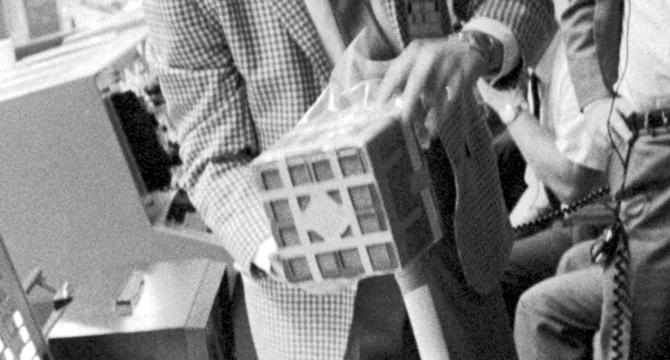
Image Credit: Hackaday
In Memory of Ed Smylie, Whose Famous Hack Saved the Apollo 13 Crew
- Ed Smylie, the NASA engineer known for his famous hack that saved the Apollo 13 crew, recently passed away at the age of 95 in Crossville, Tennessee.
- In 1970, Ed Smylie improvised a gas conduit using plastic bags and duct tape to help the astronauts of Apollo 13 escape safely after an explosion on the command module.
- The hack involved creating an adapter to fit square lithium hydroxide canisters into round openings in the lunar module, allowing the astronauts to filter air for three people instead of two.
- Ed Smylie's ingenuity and quick thinking during the Apollo 13 mission have been widely praised, with his legacy living on as one of the greatest hacks of all time.
Read Full Article
12 Likes
Medium
162

Image Credit: Medium
VOoRaX model – Vibrational Origin of Reality and eXpansion
- The VOoRaX model, developed by Pavel Oravec, challenges the concept of time as a fundamental dimension in physics, proposing that reality exists in oscillations of space curvature instead of time
- In the VOoRaX model, events are determined by the number of oscillations of space curvature, which are independent of time but influenced by factors like gravity
- The model introduces the concept of OSC (Oscillatory Unit of Space) to replace seconds, emphasizing the counting of spatial curvature oscillations to measure physical processes
- By replacing time with counting oscillation cycles, the VOoRaX model offers a new perspective on reality and aims to advance our understanding of the universe
- An analogy using a pendulum and a car is used to help explain how events can be described by the count of recurring oscillations of space, from macro to micro scales
- The model has been tested across various phenomena in classical, quantum, and cosmic physics, demonstrating its potential to explain physical laws without the concept of time
- VOoRaX's predictions include interpretations of gravity, dark matter, dark energy, black holes, and energy capture from oscillations, suggesting new directions for experimental verification
- Possible experiments involve comparing atomic clocks in different gravitational fields, conducting pendulum experiments on other planets, and developing oscillator crystals to measure OSC
- The model's philosophical implications suggest that time is not the foundation of reality, consciousness could be related to space oscillations, and it offers a unification of physics without the need for time
- VOoRaX invites collaboration from scientists for expert review, experimental support, publishing assistance, and technological research to further explore its implications and applications in physics and beyond
Read Full Article
9 Likes
Knowridge
423

Image Credit: Knowridge
Magellan mission reveals possible tectonic activity on Venus
- New research using data from NASA’s Magellan mission has revealed signs of possible tectonic activity on Venus, challenging previous beliefs about the planet's surface.
- Massive oval-shaped structures on Venus's surface, called coronae, may indicate ongoing geological processes beneath the planet's surface.
- Findings suggest that rising plumes of hot material from Venus's mantle could be pushing against its outer shell, potentially leading to processes similar to subduction and lithospheric dripping.
- The upcoming NASA VERITAS mission, slated for launch in 2031, aims to provide more detailed mapping of Venus's surface and gravitational field, offering deeper insights into the planet's geology and potentially revolutionizing our understanding of Venus and Earth's geological history.
Read Full Article
25 Likes
The Verge
316

Image Credit: The Verge
China begins assembling its supercomputer in space
- China has launched the first 12 satellites of a planned 2,800-strong orbital supercomputer satellite network to process data independently.
- Each satellite in the network has an 8-billion parameter AI model and can perform 744 tera operations per second collectively achieving 5 peta operations per second.
- The satellites communicate with each other using lasers at speeds up to 100Gbps and share 30 terabytes of storage. They also carry scientific payloads for various purposes.
- Space-based supercomputers offer benefits like saving communications time, improved data transmission, and reduced energy needs, setting a precedent for similar projects by other countries.
Read Full Article
19 Likes
Discover more
Livescience
25

Image Credit: Livescience
China is sharing priceless moon samples with international partners, but NASA can't be a part of it
- Moon samples from China's Chang'e 5 mission are being shared with international researchers, but U.S.-based scientists face difficulties in receiving them due to the Wolf Amendment.
- Scientists from Europe, Ethiopia, Russia, and the U.S. are collaborating, with NASA prevented from funding U.S.-based researchers due to the law.
- The Wolf Amendment was introduced in 2011 to prevent cooperation between NASA and China to protect U.S. space technologies from being used militarily by China.
- The amendment restricts bilateral cooperation between U.S. and Chinese scientists without prior approval of Congress.
- NASA cannot receive or fund research into Chinese moon samples due to these restrictions.
- Despite this, American researcher Timothy Glotch received a sample and plans to analyze its thermal properties to compare with Apollo-era samples.
- Chinese scientists found Chang'e 5 samples to be much younger than Apollo samples, indicating prolonged volcanic activity on the moon.
- Research conducted by international teams on the samples aims to provide insights into the history of elements in the solar system.
- These findings contribute to a greater understanding of lunar volcanism and the geological history of the moon.
- International collaboration in lunar research facilitates groundbreaking discoveries and advances in planetary science.
Read Full Article
1 Like
Medium
111

Image Credit: Medium
Lights out!
- HII regions are created when radiation from hot, young stars strips away electrons from neutral hydrogen atoms in the surrounding gas to form ionized hydrogen clouds.
- Scientists use telescopes like Chandra to study HII regions as young stars emit bright X-rays and X-rays can penetrate gas and dust shrouds around infant stars.
- The composite image of the region includes X-ray data from Chandra and ROSAT telescope (purple), infrared data from Spitzer Space Telescope (orange), and optical data from SuperCosmos Sky Survey (blue).
- The image shows purple and blue drops of paint layered between streaks of orange and blue, indicating stars scattered all over, with bubbles created by radiation and material blown away from massive stars.
Read Full Article
6 Likes
Livescience
385

Image Credit: Livescience
NASA celebrated this employee's story of resilience, then tried to scrub it from the internet. Then fired her.
- Rose Ferreira's story of resilience, from a poverty-stricken childhood to becoming a NASA employee, was celebrated on the agency's website before being mysteriously removed amidst changes made by the Trump administration in alignment with new laws.
- NASA began firing employees associated with diversity, equity, inclusion, and accessibility initiatives, erasing mentions of such efforts from its websites, including Ferreira's profile.
- Ferreira's journey involved overcoming abuse, homelessness, and significant personal hardships to pursue her passion for science and space exploration.
- Despite facing adversity, Ferreira persisted, earned degrees in astronomy and planetary sciences, and joined NASA, where she excelled in STEM outreach and activism.
- The removal of diversity-focused content at NASA sent a message of exclusion to Ferreira and her colleagues, creating a tense environment within the agency.
- After Ferreira's NASA feature was restored due to public outcry, she was unexpectedly fired without proper explanation, leading to feelings of betrayal and disappointment.
- Despite challenges, Ferreira remains dedicated to advocating for STEM education and empowering marginalized communities, while expressing concerns about NASA's future amidst budget cuts and personnel changes.
- The uncertain landscape at NASA under the Trump administration raises questions about the agency's direction and commitment to diversity and inclusion.
- Ferreira's story highlights the struggles faced by individuals from underrepresented backgrounds in STEM fields and the importance of perseverance and advocacy amid adversity.
- Post-firing, Ferreira remains focused on her activism, emphasizing the need to inspire others to pursue careers in science and space exploration despite challenges.
Read Full Article
23 Likes
Livescience
316
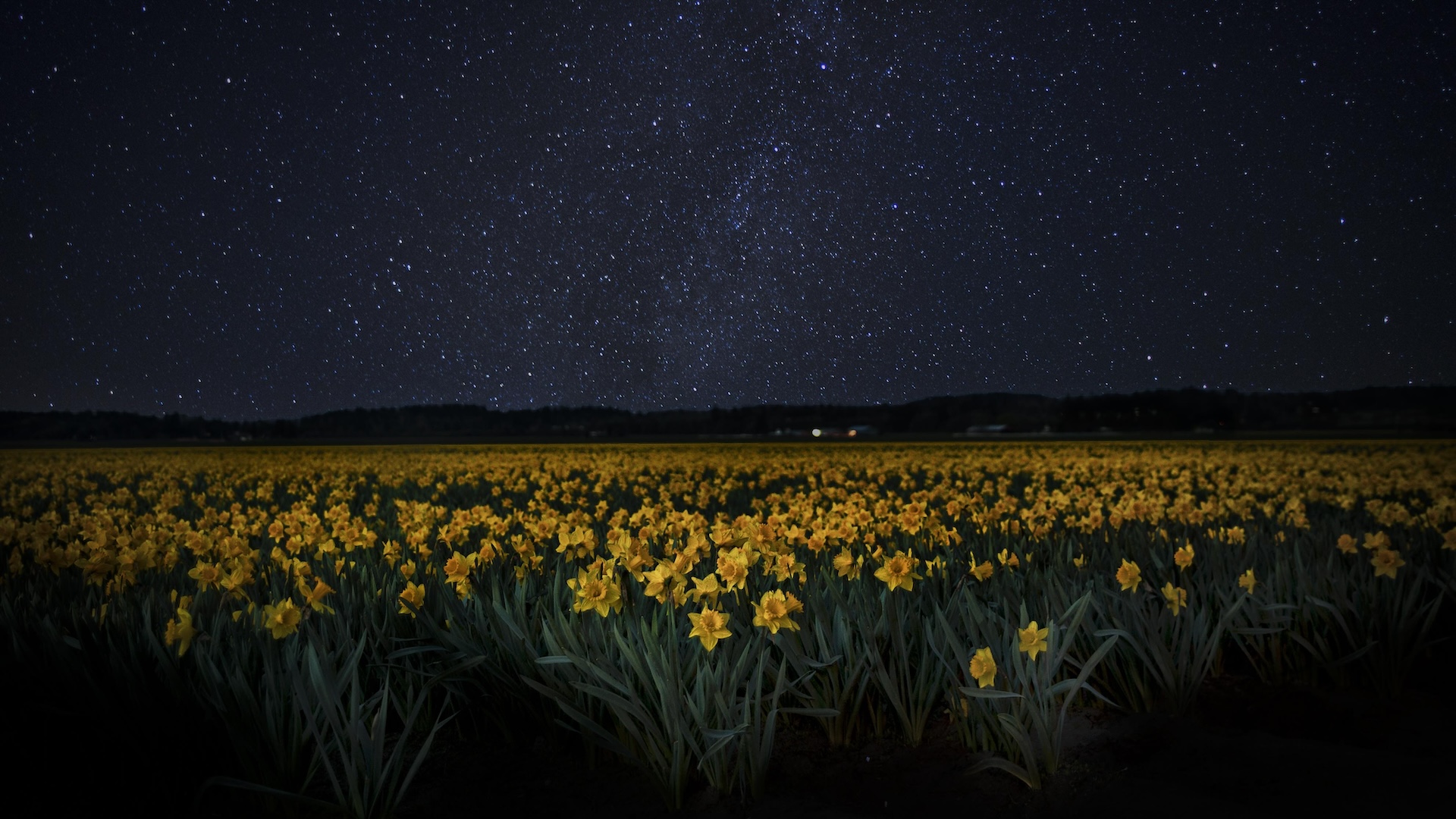
Image Credit: Livescience
May's best stargazing week is about to begin. How to see a lion, an upside-down bear, a mini 'planet parade' — and more.
- The upcoming new moon on May 26 will provide a perfect opportunity for stargazers as it darkens the night sky, minimizing light pollution for optimal viewing.
- From May 20 to May 30, stargazers can observe various celestial objects in the night sky, including Ursa Major with the Big Dipper asterism, easily recognizable in the Northern Hemisphere.
- Leo the lion, marked by a backward question mark of stars and the bright star Regulus, will be prominent in the southern sky in May.
- A 'planet parade' on May 23 will feature a crescent moon near Venus and Saturn before sunrise, offering a rare viewing opportunity.
- Botes, the herdsman constellation, can be found by following the arc from the handle of the Big Dipper to the bright star Arcturus, forming a distinct shape akin to a kite or champagne flute.
- The Hercules Cluster, particularly M13, located in the constellation Hercules, offers stargazers a chance to observe a dense globular cluster containing over 100,000 stars from a distance of 25,000 light-years.
Read Full Article
19 Likes
Earthsky
334
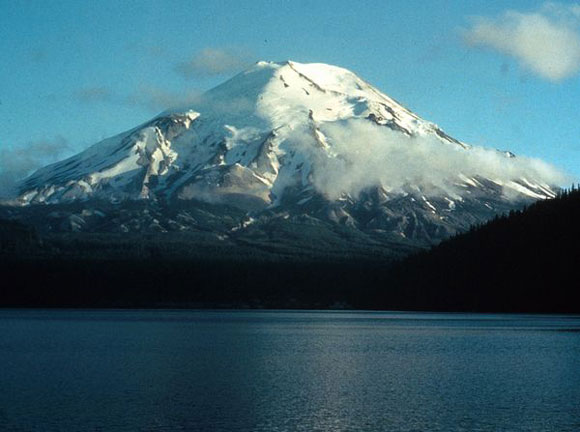
Image Credit: Earthsky
The Mount St. Helens deadly eruption was 45 years ago
- The catastrophic and deadly eruption of Mount St. Helens occurred on May 18, 1980, with a massive landslide and lateral blast destroying an area of 230 square miles in mere minutes.
- The eruption resulted in 57 fatalities, including volcanologist David A. Johnston and photojournalist Reid Blackburn.
- The devastating blast reduced the dense forest on the volcano's slopes to ash within the inner blast zone and caused damage even beyond.
- Lahars, mudflows from volcanic eruptions, formed rapidly and caused further destruction to nearby communities.
- Over the decades, the area affected by the 1980 eruption has slowly begun to rebound with new life.
- Mount St. Helens remains an active and dangerous volcano, monitored closely by the Cascades Volcano Observatory.
- Today, the volcano stands 8,366 feet high, significantly shorter than before the 1980 eruption, and is part of the Cascade Range in Washington.
- Since 1980, Mount St. Helens has experienced periodic earthquakes and eruptions, though not as severe as the 1980 event.
- The eruption had a lasting impact on the region, with memories of the tragedy still vivid after 45 years.
- Despite the destruction, the area around Mount St. Helens has shown signs of regeneration and recovery over time.
Read Full Article
20 Likes
Livescience
385
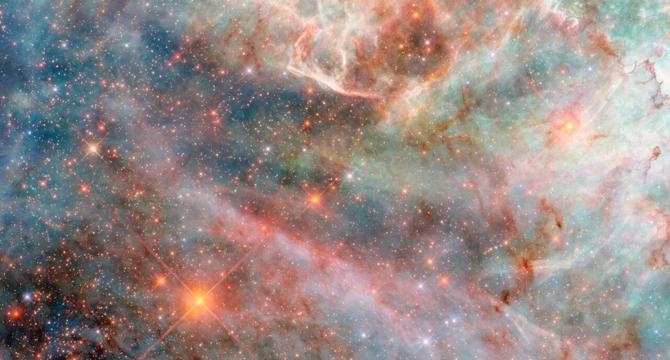
Image Credit: Livescience
Space photo of the week: Cotton candy clouds shine in one of Hubble's most beautiful images ever
- The Hubble Space Telescope captured stunning images of cotton-candy clouds in the Large Magellanic Cloud, the largest satellite galaxy of the Milky Way.
- The image showcases a dense star field with wispy gas resembling multicolored cotton candy against a backdrop of orange and blue stars.
- The LMC, visible only from the Southern Hemisphere, plays a significant role in the future as it may interact with the Milky Way as our galaxy collides with the Andromeda galaxy.
- The Large Magellanic Cloud and the Small Magellanic Cloud are visible dwarf galaxies orbiting the Milky Way, connected by a gas bridge, suggesting past interactions between them.
Read Full Article
23 Likes
Earthsky
265
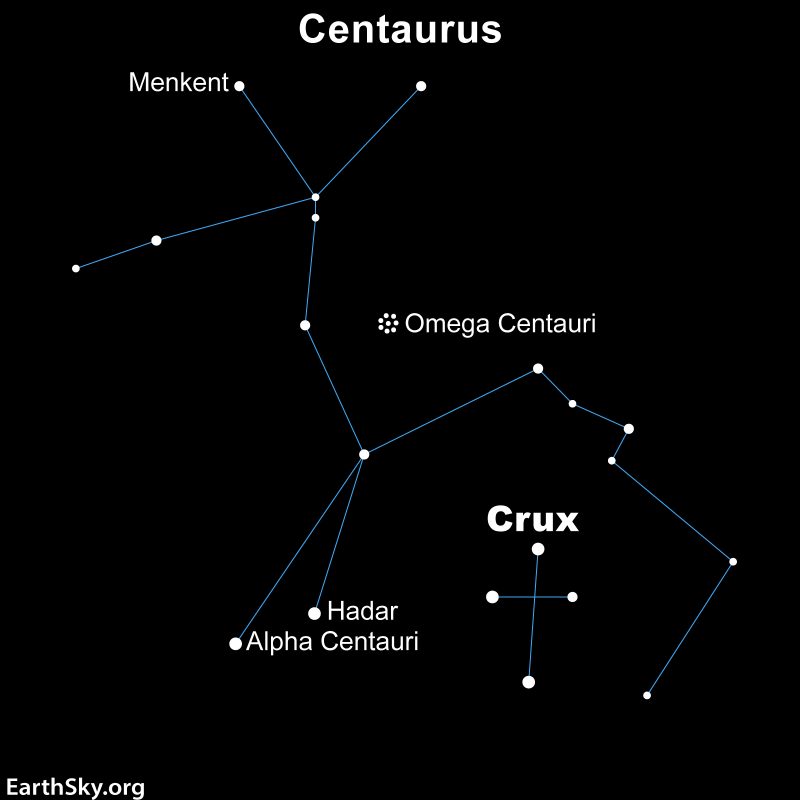
Image Credit: Earthsky
Centaurus the Centaur is home to some nearby stars
- Centaurus the Centaur is a constellation located in the Southern Hemisphere skies, being the 9th largest among the 88 constellations.
- The constellation houses the three closest known stars to our sun, with Alpha Centauri being the nearest star, situated 4.3 light-years away and shining brightly at magnitude -0.27.
- Other notable stars in Centaurus include Beta Centauri, also known as Hadar, which is a blue-white supergiant located 348 light-years away, as well as Menkent, or Theta Centauri, positioned 61 light-years away.
- Deep-sky objects within Centaurus include Omega Centauri, a globular cluster, the Running Chicken cluster and gas cloud, and NGC 3918, known as the Blue Planetary, offering intriguing celestial sights for astronomers.
Read Full Article
15 Likes
Medium
218

Image Credit: Medium
How I Made $300 a Day with AI Voice Cloning
- Discover how AI voice cloning technology can help you earn over $300 a day by creating personalized voice clones that capture your unique accent and emotional nuances.
- The Vocal Identity Matrix allows users to enhance communication, maximize content's emotional impact, and save time and effort, resulting in financial gains and improved engagement levels.
- Users of the app, including top YouTubers, have reported significant success in generating income through voiceovers for various purposes such as ads and podcasts.
- The app's user-friendly interface, realistic outputs, and emotional resonance set it apart from traditional AI voice cloning methods, offering potential earnings of up to $2,000 a month for consistent use.
Read Full Article
13 Likes
Knowridge
22
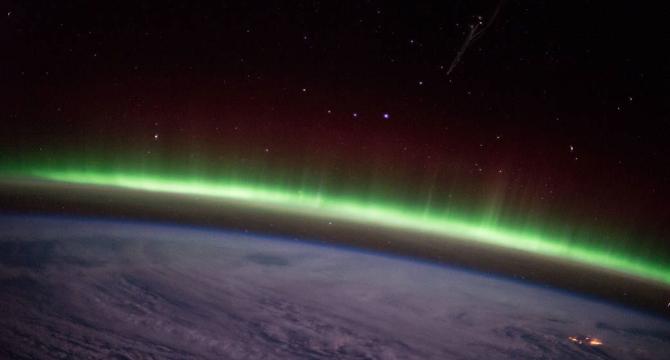
Image Credit: Knowridge
Astronauts could see auroras on Mars with their eyes
- On March 15th, 2024, a powerful solar flare from the Sun led to auroras across the Solar System, including Mars.
- NASA's Perseverance rover captured the first visible light image of an aurora on Mars using its Mastcam-Z instrument.
- Mars doesn't have a global magnetic field like Earth, but localized magnetic fields and a thin atmosphere allow for fainter green light auroras.
- This discovery opens up new possibilities for auroral research and suggests that future astronauts on Mars could witness auroras from the surface.
Read Full Article
1 Like
Brighter Side of News
377

Image Credit: Brighter Side of News
Journey to the end of the universe—measured one step at a time
- Embark on a cosmic journey to the universe's edge, witnessing stars being born and galaxies colliding in a grand theater of creation and destruction.
- Walking in space is impossible due to lack of surfaces and gravity, with dangers like black holes and deadly radiation posing significant challenges.
- Calculating a walk to the edge of the observable universe reveals the immense scale—taking approximately 10 quadrillion years at a human's pace.
- The universe's expansion, driven by dark energy, means the journey's end is always moving farther away, with scientific debates over the Hubble constant.
- End scenarios include the Big Freeze, Big Rip, and Big Crunch, illustrating possible fates as dark energy propels galaxies apart.
- While walking across the universe is impossible, exploring smaller distances like Earth's circumference or the Milky Way's diameter showcases cosmic vastness.
- From Earth to the Milky Way, the immense scales and challenges of walking across celestial bodies highlight human curiosity and the wonder of exploration.
- While the cosmic journey may be beyond reach, the desire to explore and imagine the wonders of the universe remains an intrinsic human trait.
- No matter how vast the cosmos, the marvel of discovery and the human spirit of adventure persist.
- The article was provided by The Brighter Side of News and edited for style and length.
- To explore such feel-good stories, readers can subscribe to The Brighter Side of News' newsletter.
Read Full Article
22 Likes
The Robot Report
150

RealMan displays embodied robotics at Automate 2025
- RealMan Intelligent Technology Co. showcased its latest lineup of robotic arms, dual-arm platforms, and joint modules at Automate 2025 for industrial automation and human-robot collaboration.
- The company's products find applications in industries like new retail, healthcare, education, and aerospace, with a focus on bringing robots to homes and businesses.
- RealMan displayed cutting-edge technologies at the event, including dual-arm lifting platform, joint modules, healthcare robot, robotic loading/unloading cells, robotic polishing workstation, and heavy-duty robotic arm.
- The company emphasized its global expansion and commitment to providing customizable, embodied robotic solutions to industrial customers, engaging with partners from the U.S. and Canada at Automate 2025.
Read Full Article
9 Likes
For uninterrupted reading, download the app